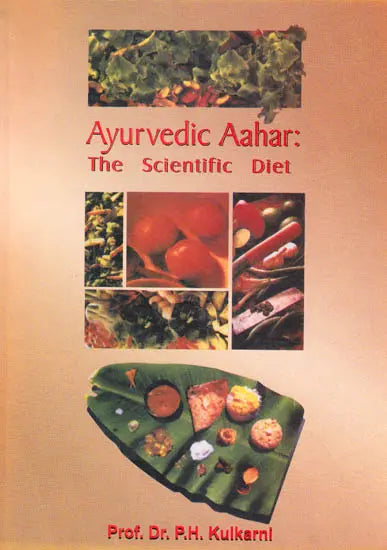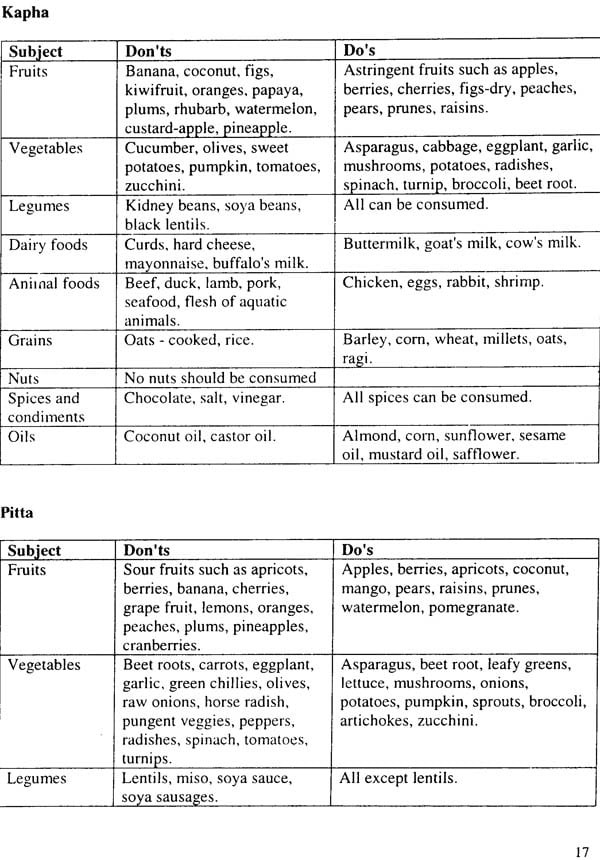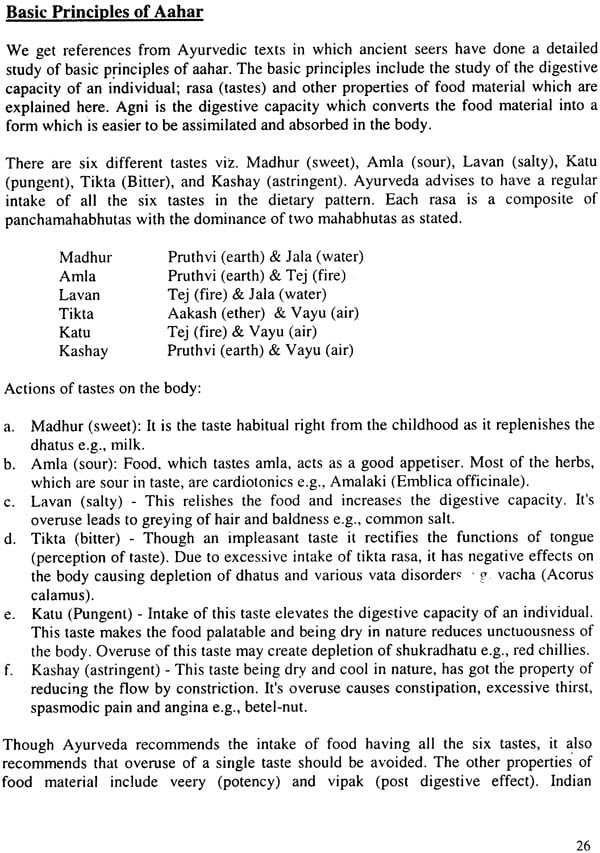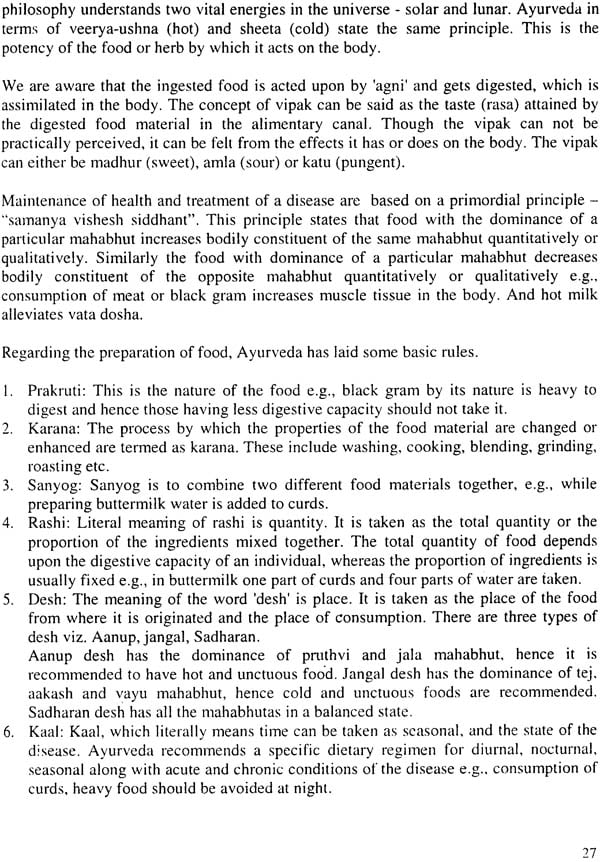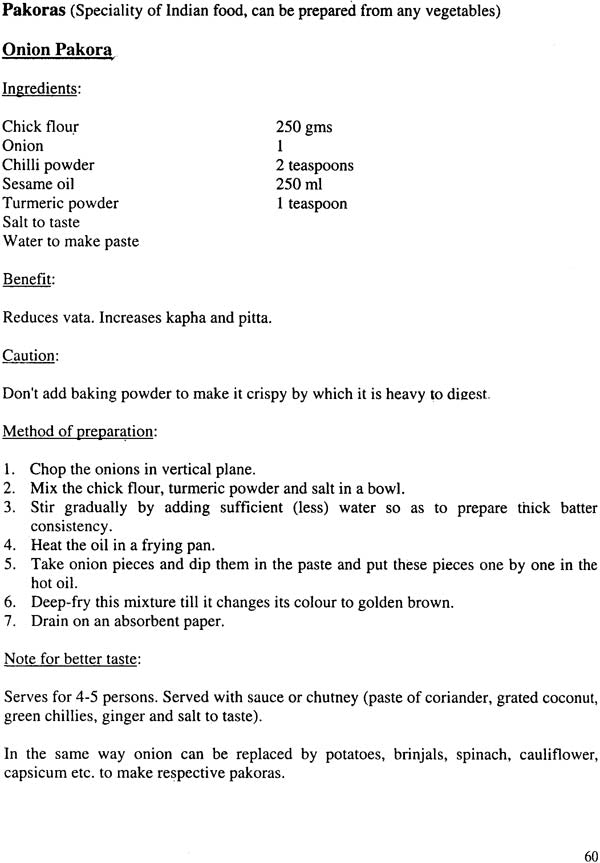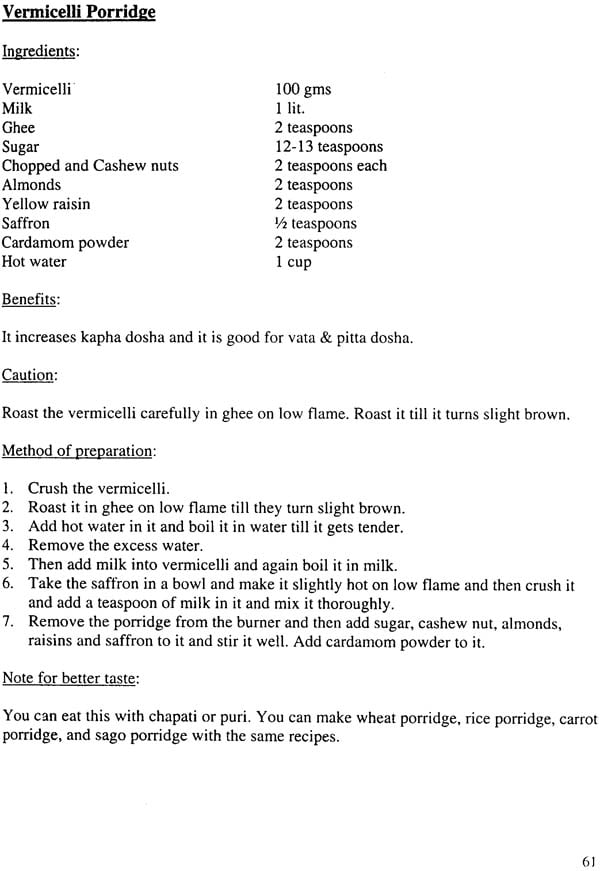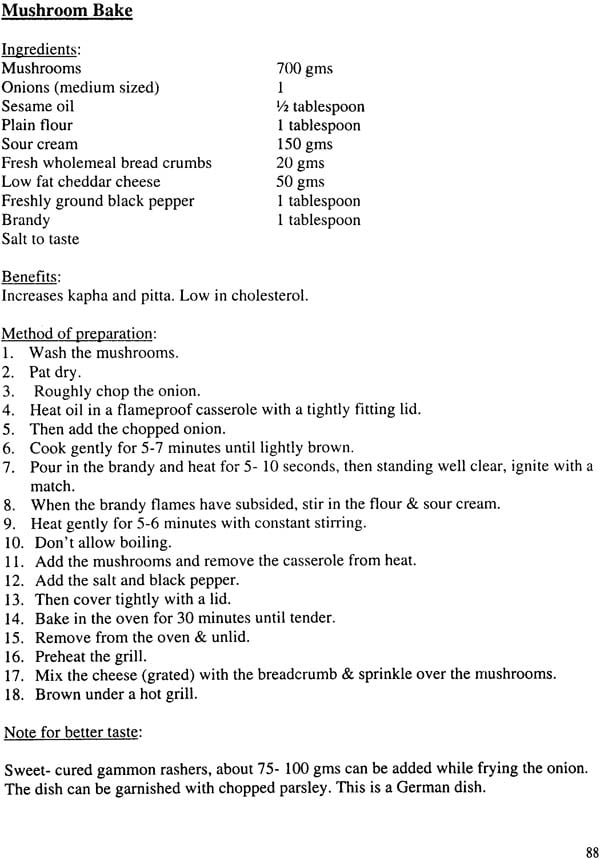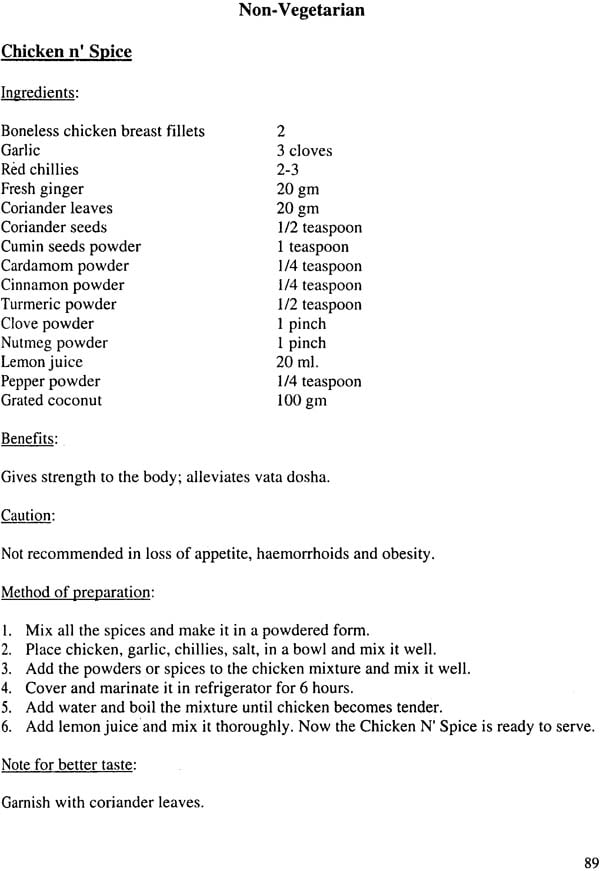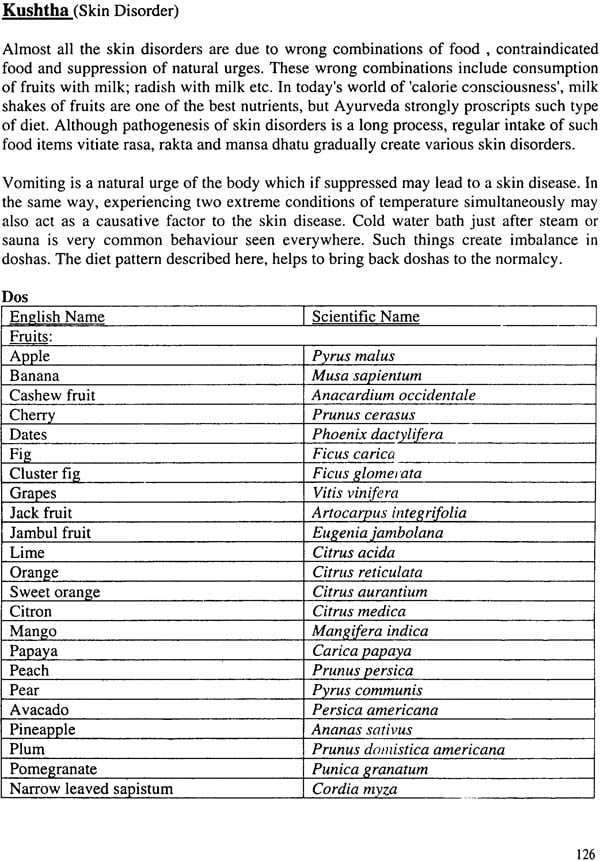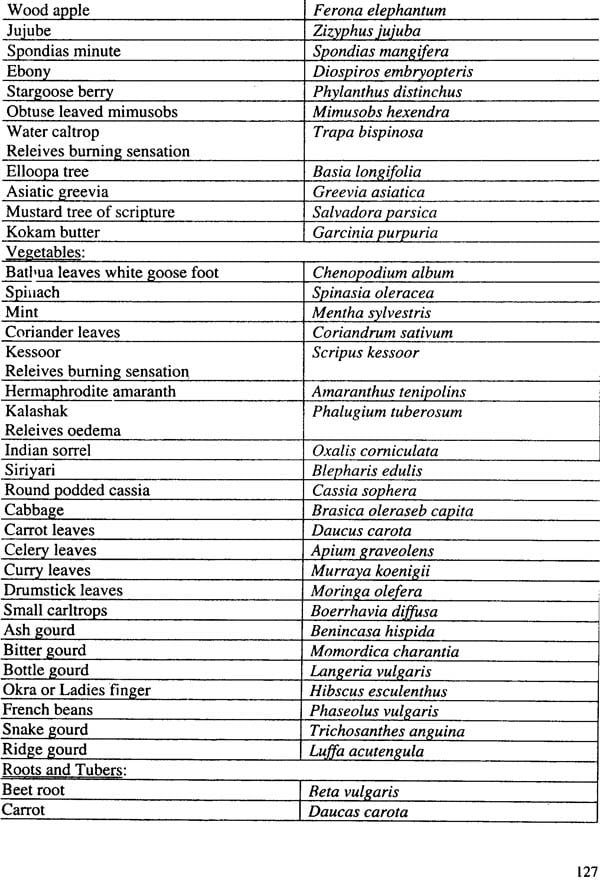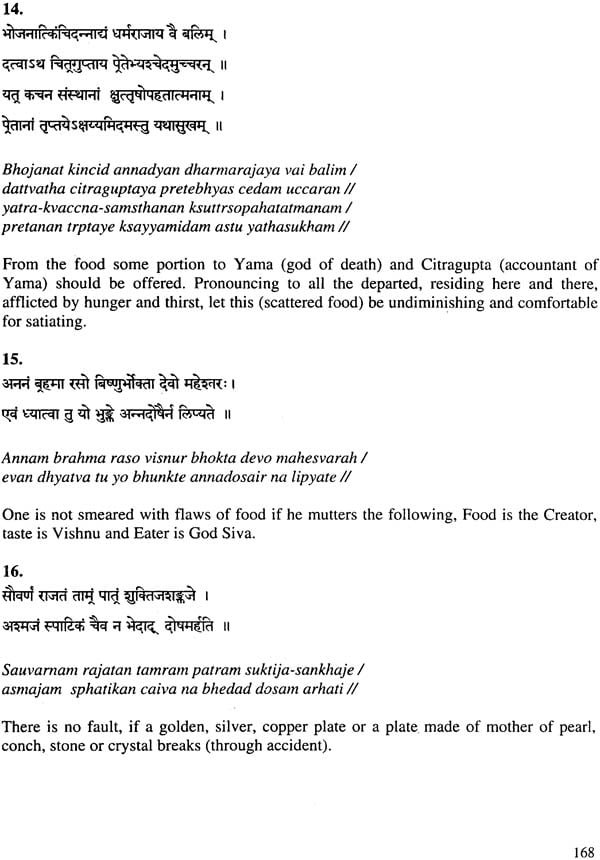Ayurvedic Aahar : The Scientific Diet
Ayurvedic Aahar : The Scientific Diet is backordered and will ship as soon as it is back in stock.
Couldn't load pickup availability
Genuine Products Guarantee
Genuine Products Guarantee
We guarantee 100% genuine products, and if proven otherwise, we will compensate you with 10 times the product's cost.
Delivery and Shipping
Delivery and Shipping
Products are generally ready for dispatch within 1 day and typically reach you in 3 to 5 days.
Product Details
-
Publisher: Sri Satguru Publications
-
Author: Dr. P.H. Kulkarni
-
Language: English
-
Pages: 189
-
Cover: Paperback
-
Dimensions: 24.5 cm x 18.5 cm
-
Weight: 320 gm
-
Edition: 2002
-
ISBN: 9788170307396
Book Description
Introduction
India, the land of rich culture and heritage, has a tradition of a unique lifestyle and healing science, different from modern medicine—Ayurveda. This ancient system of healing originated thousands of years ago and continues to play an integral role in maintaining health and well-being.
The four goals of human life—Dharma (spiritual, social, and moral duties), Artha (livelihood), Kama (desires), and Moksha (salvation)—are all achievable through good health, and Ayurveda is the key to maintaining it.
This book delves into the origins of Ayurveda, which is said to have been perceived by Lord Brahma, passed on to Daksha Prajapati, and further imparted to Ashwinikumar, and then Lord Indra. Different Ayurvedic texts offer varied interpretations, with Sushrut Samhita and Charak Samhita detailing its development.
Ayurveda understands human physiology through panchamahabhutas (five elements) which form the foundation of both the human body and nature itself:
-
Aakash (Ether)
-
Vayu (Air)
-
Tej (Fire)
-
Jala (Water)
-
Prithvi (Earth)
Each of these elements has distinct qualities and plays a pivotal role in bodily functions.
The book also details the doshas (biological humours) that govern bodily functions:
-
Vata, Pitta, and Kapha.
These doshas help regulate various bodily processes like digestion, movement, and bodily secretions.
Additionally, the text covers Dhatus (bodily tissues) and Malas (waste products), providing a comprehensive overview of Ayurvedic physiology.
Back of the Book
In recent years, Ayurveda has been introduced to a global audience through various media platforms. The future of Ayurvedic science lies in the hands of the younger generation, who must equally focus on both the practice and dissemination of Ayurveda.
In this book, particular emphasis is placed on Ayurvedic dietetics, which has often been overlooked in the modern world. Ayurveda’s approach to diet is unique, focusing on the properties of food and its impact on the body, rather than merely on the quantity consumed. The book highlights the importance of digestion, food combinations, and the seasonal and regional variations in diet.
The dietary patterns discussed in this book are based on the principles of Ayurveda, which advocate for a holistic and balanced approach to eating. A number of recipes are included to illustrate how Ayurveda can be incorporated into daily life for better health and wellness.

